Following the lead of MGM, who started a record label in the late 1940s, and Paramount, who established ABC-Paramount in 1957, Warner Brothers formed its own Warner Brothers Records as a division of Warner Brothers Studios on March 19, 1958. The office was located above the film studio's machine shop at 3701 Warner Blvd. in Burbank, California. The President of the label was James B. Conklin. Directors of A&R were Harris Ashburn, George Avakian and Bob Prince. The Warner Brothers label initially recorded pop, jazz, classical, spoken word, folk and gospel.
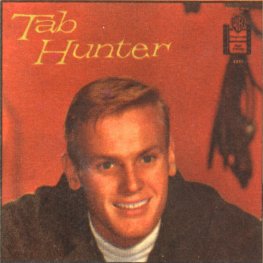 Over the
years, it had not bothered Warner Brothers too much that they didn't have a record company, but it was
in early 1957, when Randy Wood's Dot Records signed Warners' movie star Tab Hunter to a recording
contract, that the Warner Brothers brass started seeing red. Wood could sign Hunter because although
his Warner Brothers contract was exclusive, Warners had no record label. In fact, the timing of when
Warner Brothers started their record label was very much linked to their getting their star's recording
contract away from Dot. Hunter, who by his own admission could barely sing at all, was coached by
Wood to make a few passable records which were major hits in 1957, while Warners steamed. When
Warner Brothers finally got their record label off the ground in 1958, they reclaimed Tab Hunter, who
made several albums for the label and had a few singles in the mid-ranges of the charts, although
nothing like the success he had had with Dot. In fact, Tab Hunter's "Jealous Heart" [WB 5008], which
only made #62 on the charts, was the only chart record Warner Brothers had during its first year, 1958.
Over the
years, it had not bothered Warner Brothers too much that they didn't have a record company, but it was
in early 1957, when Randy Wood's Dot Records signed Warners' movie star Tab Hunter to a recording
contract, that the Warner Brothers brass started seeing red. Wood could sign Hunter because although
his Warner Brothers contract was exclusive, Warners had no record label. In fact, the timing of when
Warner Brothers started their record label was very much linked to their getting their star's recording
contract away from Dot. Hunter, who by his own admission could barely sing at all, was coached by
Wood to make a few passable records which were major hits in 1957, while Warners steamed. When
Warner Brothers finally got their record label off the ground in 1958, they reclaimed Tab Hunter, who
made several albums for the label and had a few singles in the mid-ranges of the charts, although
nothing like the success he had had with Dot. In fact, Tab Hunter's "Jealous Heart" [WB 5008], which
only made #62 on the charts, was the only chart record Warner Brothers had during its first year, 1958.
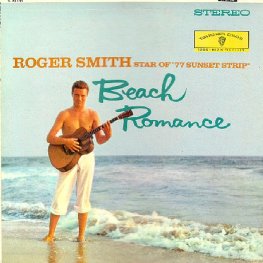
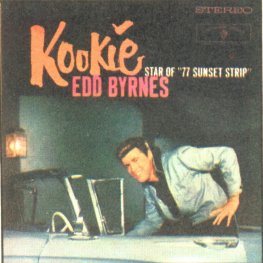 Initially, Warner Brothers ignored most of the teenage rock and roll or pop artists, and were focusing on
the adult "popular" record market, which was still regarded as the main outlet for albums. By 1959, they
were floundering, becoming known as a "piano album record company," desperately needing to do
something to survive. First, they tried looking younger by cashing in with albums by the younger
members of Warner Brothers television shows. Ed "Kookie" Burns ("Kookie Kookie (Lend Me Your
Comb)" [WB 5047, #4] and "Like I Love You" [WB 5087, #42]) and Roger Smith ("Beach Time" [WB
5068, #64]) from the popular television series 77 Sunset Strip had single hits and albums
released. The album 77 Sunset Strip by Don Ralke also provided their first album charter, making
#3 and spawning a well-known single of the same name [WB 5025, #69]. Unfortunately, it was the only
album which charted for Warner Brothers in 1959. Connie Stevens, who played Cricket on Hawaiian
Eye, later had several
albums for the label (and was heard as Kookie's girlfriend on the hit record, "Kookie, Kookie (Lend Me
Your Comb)"). Even Clint Walker, star of the western series Cheyenne had an album of religious
songs. This ploy made the label look like it was an extension of the movie and television studio, but
didn't do much to establish it in the music industry or in the minds of record buyers as a top-40 music
force. In 1959, in addition to the two Edd Byrnes hits and the Roger Smith charter, WB had two Tab
Hunter records ("I'll Be With You In) Apple Blossom Time" [WB 5032, #31] and "No Fool Like a Young
Fool" [WB 5051, #59]), and a revival of the old Ken Griffin tune "You Can't Be True Dear" by the Mary
Kaye Trio [WB 5050, #75]. For the second year of a label with such solid financial resources, it was less
than an overwhelming success. But things were about to change.
Initially, Warner Brothers ignored most of the teenage rock and roll or pop artists, and were focusing on
the adult "popular" record market, which was still regarded as the main outlet for albums. By 1959, they
were floundering, becoming known as a "piano album record company," desperately needing to do
something to survive. First, they tried looking younger by cashing in with albums by the younger
members of Warner Brothers television shows. Ed "Kookie" Burns ("Kookie Kookie (Lend Me Your
Comb)" [WB 5047, #4] and "Like I Love You" [WB 5087, #42]) and Roger Smith ("Beach Time" [WB
5068, #64]) from the popular television series 77 Sunset Strip had single hits and albums
released. The album 77 Sunset Strip by Don Ralke also provided their first album charter, making
#3 and spawning a well-known single of the same name [WB 5025, #69]. Unfortunately, it was the only
album which charted for Warner Brothers in 1959. Connie Stevens, who played Cricket on Hawaiian
Eye, later had several
albums for the label (and was heard as Kookie's girlfriend on the hit record, "Kookie, Kookie (Lend Me
Your Comb)"). Even Clint Walker, star of the western series Cheyenne had an album of religious
songs. This ploy made the label look like it was an extension of the movie and television studio, but
didn't do much to establish it in the music industry or in the minds of record buyers as a top-40 music
force. In 1959, in addition to the two Edd Byrnes hits and the Roger Smith charter, WB had two Tab
Hunter records ("I'll Be With You In) Apple Blossom Time" [WB 5032, #31] and "No Fool Like a Young
Fool" [WB 5051, #59]), and a revival of the old Ken Griffin tune "You Can't Be True Dear" by the Mary
Kaye Trio [WB 5050, #75]. For the second year of a label with such solid financial resources, it was less
than an overwhelming success. But things were about to change.
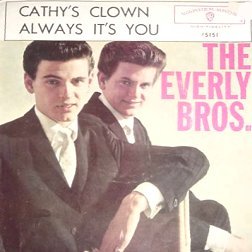 Using the
deep pockets of the Warner Brothers Studios, James Conklin started trolling for some bigger-name
performers. In 1960, he signed the Everly Brothers away from Archie Bleyer's Cadence label when their
contract with cadence expired. The Everly Brothers (Don and Phil) were major rock and roll stars at the
time, and in a gigantic publicity move, they were signed to the first million dollar contract in recording
history. This contract, which ran ten years (!), seems paltry by today's standards, but at the time it made
headlines. The Everly Brothers started off at Warners with their biggest seller ever, "Cathy's Clown," in
April of 1960. They continued to have chart hits for Warner Brothers into 1967, but they never again
equaled the success of "Cathy's Clown" [WB 5151, #1]. As was typical of the Everly Brothers, both sides
of the 45 made the charts, with "Always It's You" reaching #56. They followed this success in 1960 with
"So Sad" (#7)/"Lucille" (#21) [WB 5163].
Using the
deep pockets of the Warner Brothers Studios, James Conklin started trolling for some bigger-name
performers. In 1960, he signed the Everly Brothers away from Archie Bleyer's Cadence label when their
contract with cadence expired. The Everly Brothers (Don and Phil) were major rock and roll stars at the
time, and in a gigantic publicity move, they were signed to the first million dollar contract in recording
history. This contract, which ran ten years (!), seems paltry by today's standards, but at the time it made
headlines. The Everly Brothers started off at Warners with their biggest seller ever, "Cathy's Clown," in
April of 1960. They continued to have chart hits for Warner Brothers into 1967, but they never again
equaled the success of "Cathy's Clown" [WB 5151, #1]. As was typical of the Everly Brothers, both sides
of the 45 made the charts, with "Always It's You" reaching #56. They followed this success in 1960 with
"So Sad" (#7)/"Lucille" (#21) [WB 5163].
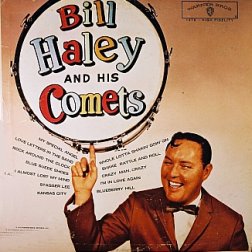 Another big
name signed to Warner Brothers in 1960, as part of the attempt to get into the then-current music
market, was Bill Haley & the Comets. Haley had many seminal rock and roll hits on Decca in the
mid-fifties, but by 1960, his very identifiable sound was passé. Although he produced a couple of
albums, he had little success for Warner Brothers.
Another big
name signed to Warner Brothers in 1960, as part of the attempt to get into the then-current music
market, was Bill Haley & the Comets. Haley had many seminal rock and roll hits on Decca in the
mid-fifties, but by 1960, his very identifiable sound was passé. Although he produced a couple of
albums, he had little success for Warner Brothers.
In addition to the Everly Brothers' success, Warner Brothers placed several other records on the charts in 1960. Connie Stevens made her "solo" chart debut with "16 Reasons" [WB 5137], which hit #3, followed by a commentary on the "tragedy songs" of the day which registered a surprising hit by country artist Don Luman called "Let's Think About Livin'" [WB 5172, #7]. Two more minor hits, Connie Stevens' followup, "Too Young to Go Steady" [WB 5159, #71], and "Beautiful Obsession" by Sir Chauncey [WB 5150, #89], completed the singles chart story for 1960.
On the album side in 1960, comedian Bob Newhart scored a #1 album with The Button-Down Mind of Bob Newhart, the success of which started Warner Brothers to look around for other comedians to sign to record contracts. Eventually, Warner Brothers would become one of the most successful in the comedy album genre, with stars like Allan Sherman and Bill Cosby also becoming household names by 1965.
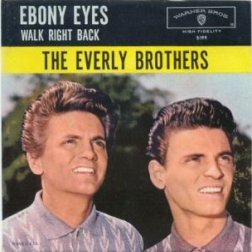
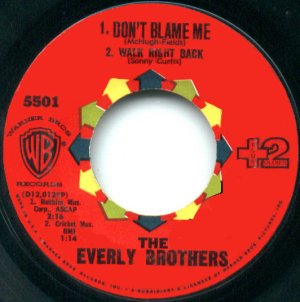 In 1961, the
modicum of success that Warner Brothers had the previous year all but dried up. Although Don and
Phil's successes continued, they were the only consistent chartmakers, and their chart success was
slipping. The Everlys charted with "Walk Right Back" (#7)/"Ebony Eyes" (#8) [WB 5199], "Temptation"
(#27)/"Stick With Me Baby" (#41) [WB 5220], and "Don't Blame Me" (#20)/"Muskrat" (#82) [WB 5501],
the latter an EP, with shortened versions of two "oldies" ("Walk Right Back" and "Lucille") also included
as an experiment to boost sales. The only other artist on the singles chart in 1961 was Bill Doggett, who
reached #66 with "(Let's Do) The Hully Gully Twist" [WB 5181].
In 1961, the
modicum of success that Warner Brothers had the previous year all but dried up. Although Don and
Phil's successes continued, they were the only consistent chartmakers, and their chart success was
slipping. The Everlys charted with "Walk Right Back" (#7)/"Ebony Eyes" (#8) [WB 5199], "Temptation"
(#27)/"Stick With Me Baby" (#41) [WB 5220], and "Don't Blame Me" (#20)/"Muskrat" (#82) [WB 5501],
the latter an EP, with shortened versions of two "oldies" ("Walk Right Back" and "Lucille") also included
as an experiment to boost sales. The only other artist on the singles chart in 1961 was Bill Doggett, who
reached #66 with "(Let's Do) The Hully Gully Twist" [WB 5181].
Bill Doggett, the Everly Brothers, Tab Hunter, and Bill Haley all shared one interesting characteristic: they had been successful on other record labels before they appeared on Warner Brothers. In fact, for their first ten years of existence, it was quite common for an artist to have had a decent career with another label, then have a chart hit or so for Warner Brothers before fading into obscurity. The list is long: Beau Brummels (ex-Autumn Records), Vic Damone (Columbia), James Darren (Colpix), Dick and Dee Dee (Liberty), Dion (Laurie, Columbia), Bill Doggett (King), Everly Brothers (Cadence), Tab Hunter (Dot), Van Morrison (Bang), and the Tokens (RCA). Even Petula Clark, who had her major hits with Warner Brothers, had been on Laurie earlier. With a few exceptions like Peter, Paul & Mary, it wasn't until the late 1960s that Warner Brothers seemed to more frequently sign their own talent from the start.
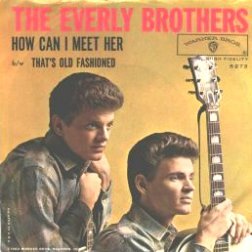
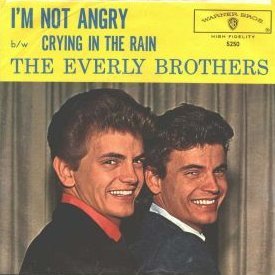 Although their last
few singles had been slipping in the charts, the Everly Brothers came back strong in 1962 with "Crying in
the Rain" (#6) [WB 5250] and "That's Old Fashioned" (#9)/"How Can I Meet Her" (#75) [WB 5273]. By
this time, the Everly Brothers were quietly consulting with Archie Bleyer, their old boss from Cadence
days, about their material, and it was Bleyer that pulled out the old, unreleased Chordettes song
"That's Old Fashioned" and suggested it to the Brothers. The link with Archie Bleyer remained intact
even though they had jumped ship in 1960; in fact, Phil Everly married Bleyer's stepdaughter Jackie
Ertel in 1963.
Although their last
few singles had been slipping in the charts, the Everly Brothers came back strong in 1962 with "Crying in
the Rain" (#6) [WB 5250] and "That's Old Fashioned" (#9)/"How Can I Meet Her" (#75) [WB 5273]. By
this time, the Everly Brothers were quietly consulting with Archie Bleyer, their old boss from Cadence
days, about their material, and it was Bleyer that pulled out the old, unreleased Chordettes song
"That's Old Fashioned" and suggested it to the Brothers. The link with Archie Bleyer remained intact
even though they had jumped ship in 1960; in fact, Phil Everly married Bleyer's stepdaughter Jackie
Ertel in 1963.
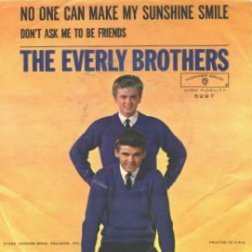 "That's Old Fashioned"
proved to be the Everly Brothers' last Top-10 hit. The followup single, "Don't Ask Me to Be Friends" [WB
5297] only made #48, and from there they hit a long spell off the charts altogether. They managed two
more top-40 entries, "Gone Gone Gone" [WB 5478, #31 in 1964] and "Bowling Green" [WB 7020, #40 in
1967], but the last seven years of the Everly Brothers' 10-year pact was short on hits. Despite the limited
later chart success during this time, the Everly Brothers produced a series of outstanding albums in the
late 1960s for Warner Brothers. Arguably their finest album was the great Roots [WS 1752],
which featured traditional folk and country songs interspersed with segments taken from the Everly
Family radio show when the brothers were children. In the early 1970s, the brothers had a
well-publicized breakup and didn't reconcile until the 1980s, when they had a reunion concert and signed
with Mercury Records. Their last chart single to date was the 1984 top-50 single "On the Wings of a
Nightingale" [Mercury 880213], penned by Paul McCartney and produced by Dave Edmunds.
"That's Old Fashioned"
proved to be the Everly Brothers' last Top-10 hit. The followup single, "Don't Ask Me to Be Friends" [WB
5297] only made #48, and from there they hit a long spell off the charts altogether. They managed two
more top-40 entries, "Gone Gone Gone" [WB 5478, #31 in 1964] and "Bowling Green" [WB 7020, #40 in
1967], but the last seven years of the Everly Brothers' 10-year pact was short on hits. Despite the limited
later chart success during this time, the Everly Brothers produced a series of outstanding albums in the
late 1960s for Warner Brothers. Arguably their finest album was the great Roots [WS 1752],
which featured traditional folk and country songs interspersed with segments taken from the Everly
Family radio show when the brothers were children. In the early 1970s, the brothers had a
well-publicized breakup and didn't reconcile until the 1980s, when they had a reunion concert and signed
with Mercury Records. Their last chart single to date was the 1984 top-50 single "On the Wings of a
Nightingale" [Mercury 880213], penned by Paul McCartney and produced by Dave Edmunds.
Also in 1962, Connie Stevens had two more mid-chart hits, and songstress Cathy Carroll eked into the top-100 with "Poor Little Puppet" [WB 5284, #91]. The film Rome Adventure produced the big hit "Al Di La" by Italian crooner Emilio Pericoli [WB 5259, #2], and countryman Saviero Sardis also had a minor hit with "Love Is the Sweetest Thing" [WB 5243, #86]. The year 1962 was one where beach and car songs were quite popular (if out of reach for Warner Brothers, for the most part). Surprisingly, Warner Brothers came up with a car/surf song hit that is well remembered even today, because it was based on an old cheerleaders' chant that has been used in sporting events ever since: "Let's Go (Pony)" by the Routers [WB 5283], which reached #19.
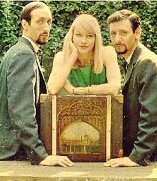 But the biggest Warner Brothers signing in 1962 was
the folk singing trio, Peter, Paul & Mary (Peter Yarrow, Noel Stookey, and Mary Travers). They had their
first hit with "Lemon Tree" in 1962 [WB 5274, #35], and followed that with a remake of the Weavers' tune
of four years earlier, "If I Had a Hammer (The Hammer Song)", which reached the top 10 [WB 5296].
After a couple of minor charters, they hit #2 in the spring of 1963 with "Puff" [WB 5348]. The song was
an innocent reflection on childhood featuring a mythical "Puff the Magic Dragon" and his friend Jackie
Paper. In a bizarre twist, when songs of the late 1960s began featuring drug references, a wry joke
became an urban legend. "Puff (The Magic Dragon)" suddenly got the reputation of being a drug song!
But the biggest Warner Brothers signing in 1962 was
the folk singing trio, Peter, Paul & Mary (Peter Yarrow, Noel Stookey, and Mary Travers). They had their
first hit with "Lemon Tree" in 1962 [WB 5274, #35], and followed that with a remake of the Weavers' tune
of four years earlier, "If I Had a Hammer (The Hammer Song)", which reached the top 10 [WB 5296].
After a couple of minor charters, they hit #2 in the spring of 1963 with "Puff" [WB 5348]. The song was
an innocent reflection on childhood featuring a mythical "Puff the Magic Dragon" and his friend Jackie
Paper. In a bizarre twist, when songs of the late 1960s began featuring drug references, a wry joke
became an urban legend. "Puff (The Magic Dragon)" suddenly got the reputation of being a drug song!
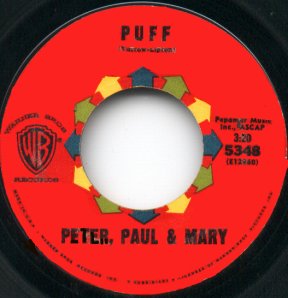 The words to "Puff" were written in 1958 by Peter Yarrow's college roommate, Leonard Lipton, with
Yarrow writing the music. Lipton noted that at Cornell University in 1958, it was years prior to the start of
the popular drug culture of the mid-1960s, and "no one smoked grass." And there was no
controversy at all about the song when it was a hit in 1963, or even for years afterward. But in 1967,
Newsweek Magazine published an article about songs "purported" to have drug-related lyrics.
The author of the article later admitted that he was looking for some of the most innocent songs he could
find to show how they could be interpreted to have drug references. (Interestingly, the Beatles' "Lucy in
the Sky with Diamonds," written about a drawing by John Lennon's child, was also a target in this article
... Lucy Sky Diamonds = LSD, get it? wink wink ... which, given the Beatles' well-publicized
experimentation with drugs, is at least understandable, if false). The author never dreamed that his
somewhat tongue-in-cheek analysis would start rumors that are "known facts" by millions even today,
and reportedly he apologized to Yarrow later.
The words to "Puff" were written in 1958 by Peter Yarrow's college roommate, Leonard Lipton, with
Yarrow writing the music. Lipton noted that at Cornell University in 1958, it was years prior to the start of
the popular drug culture of the mid-1960s, and "no one smoked grass." And there was no
controversy at all about the song when it was a hit in 1963, or even for years afterward. But in 1967,
Newsweek Magazine published an article about songs "purported" to have drug-related lyrics.
The author of the article later admitted that he was looking for some of the most innocent songs he could
find to show how they could be interpreted to have drug references. (Interestingly, the Beatles' "Lucy in
the Sky with Diamonds," written about a drawing by John Lennon's child, was also a target in this article
... Lucy Sky Diamonds = LSD, get it? wink wink ... which, given the Beatles' well-publicized
experimentation with drugs, is at least understandable, if false). The author never dreamed that his
somewhat tongue-in-cheek analysis would start rumors that are "known facts" by millions even today,
and reportedly he apologized to Yarrow later.
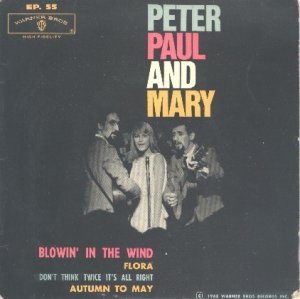 After "Puff," the trio again hit #2 in the summer of 1963, this time with what would become a folk anthem,
Bob Dylan's "Blowin' in the Wind" [WB 5368]. The followup, another Dylan tune, "Don't Think Twice, It's
All Right" [WB 5385] not only got them their third straight Top-10 hit at #9, but firmly put Dylan in the
sights of top-40 radio and the teen audiences. Peter, Paul & Mary continued to record for Warner
Brothers into the late sixties, having moderate but consistent chart Success. Ironically, in 1969, their last
chart hit, "Leaving on a Jet Plane" [WB 7340] was their only #1 hit. It also introduced the writing of
another future superstar to pop radio: John Denver. The group disbanded in 1971, but has had several
reunions and tours since then.
After "Puff," the trio again hit #2 in the summer of 1963, this time with what would become a folk anthem,
Bob Dylan's "Blowin' in the Wind" [WB 5368]. The followup, another Dylan tune, "Don't Think Twice, It's
All Right" [WB 5385] not only got them their third straight Top-10 hit at #9, but firmly put Dylan in the
sights of top-40 radio and the teen audiences. Peter, Paul & Mary continued to record for Warner
Brothers into the late sixties, having moderate but consistent chart Success. Ironically, in 1969, their last
chart hit, "Leaving on a Jet Plane" [WB 7340] was their only #1 hit. It also introduced the writing of
another future superstar to pop radio: John Denver. The group disbanded in 1971, but has had several
reunions and tours since then.
In 1963, other than Peter, Paul & Mary's three top-10 hits, Warner Brothers only had two others. On the heels of the success of Bob Newhart and Bill Cosby in the comedy genre, Allan Sherman, whose Jewish-flavored humor hit home with "Hello Muddah, Hello Faddah! (A Letter from Camp)" [WB 5378], hit #2 in late summer. Although Sherman never had another single make it to the top-10, he did quite well in album sales for years. The other top-10 hit was by the Marketts, who fashioned an instrumental inspired by the television show The Outer Limits. In fact, the song was titled "Outer Limits" until the ABC-TV folks heard of it, and pressured Warner Brothers to change the title. The result was "Out of Limits" [WB 5391], which made #3. Interestingly, the Marketts and the Routers were essentially the same "group", actually a group of studio musicians put together by Joe Saraceno. According to Saraceno, the "live" touring groups by those names were "whoever was available to play that day."
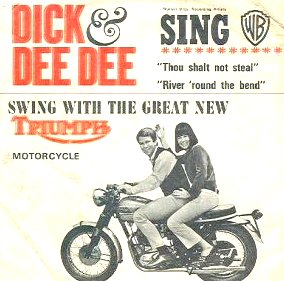 Dick and Dee Dee (Dick St. John Gostling and Deedee Sperling) had registered a couple of hit singles
for Liberty in 1961-62 before switching to Warner Bros. in 1963. At Warners, they managed two top-30
singles in 1963, "Young and in Love" [WB5342, #17] and "Turn Around" [WB 5396, #27]. Other than a
late-1964 hit with "Thou Shalt Not Steal" [WB 5482, #13], the two erstwhile high school friends would not
reach even the top-70 again.
Dick and Dee Dee (Dick St. John Gostling and Deedee Sperling) had registered a couple of hit singles
for Liberty in 1961-62 before switching to Warner Bros. in 1963. At Warners, they managed two top-30
singles in 1963, "Young and in Love" [WB5342, #17] and "Turn Around" [WB 5396, #27]. Other than a
late-1964 hit with "Thou Shalt Not Steal" [WB 5482, #13], the two erstwhile high school friends would not
reach even the top-70 again.
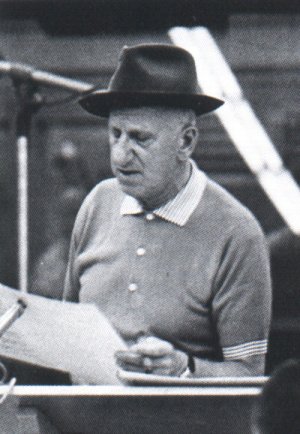 Jimmy Durante had been a comedian, performer, television personality, and actor for
decades, and by 1963 was on the downside of a stellar career. The one thing he really wanted, he said
with an ironic smile, was a top-40 record. Given the, uhh, uniqueness of "Old Schnozzola's" voice, this
was unlikely, but strange things do happen. In 1963, he hit #51 nationally (and, yes, #40 in Chicago)
with a revival of "September Song" [WB 5382], a 1938 hit for Walter Huston. Although he never again
cracked the top-100, lost in the follow up singles was a true gem from 1964: "I Came Here to Swim" [WB
5483], a bona fide rocker where Durante visits a discotheque and among other things, ponders why
"Debussy never wrote a good watusi." Although obscure (it never made it to LP or CD), a single well
worth hearing.
Jimmy Durante had been a comedian, performer, television personality, and actor for
decades, and by 1963 was on the downside of a stellar career. The one thing he really wanted, he said
with an ironic smile, was a top-40 record. Given the, uhh, uniqueness of "Old Schnozzola's" voice, this
was unlikely, but strange things do happen. In 1963, he hit #51 nationally (and, yes, #40 in Chicago)
with a revival of "September Song" [WB 5382], a 1938 hit for Walter Huston. Although he never again
cracked the top-100, lost in the follow up singles was a true gem from 1964: "I Came Here to Swim" [WB
5483], a bona fide rocker where Durante visits a discotheque and among other things, ponders why
"Debussy never wrote a good watusi." Although obscure (it never made it to LP or CD), a single well
worth hearing.
Other charters in 1963 for Warner Brothers included a followup for the Routers, "Sting Ray" [WB 5349], which made #50, and a saxophone instrumental called "Sax 5th Ave." [WB 5341, #65] by Johnny Beecher. Beecher was the pseudonym of saxophonist Plas Johnson, who had been prominently featured on several of Duane Eddy's early recordings.
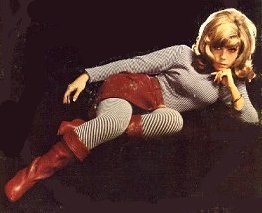 Also in 1963, Warner Brothers Records purchased the Reprise label. Reprise had been started by Frank
Sinatra in
1960 as a vehicle for his own recordings and the recordings of his Las Vegas cronies, Dean Martin and
Sammy Davis Jr. By 1963, it was starting to be termed "ailing" in the record trade press, and Warner's
deep pockets rescued it from failing. The combined Warner Brothers/Reprise labels kept separate A&R
divisions for a while, with Jimmy Bowen heading A&R for Reprise. Bowen was even able to get hits for
the boss' good-looking daughter, Nancy
Sinatra, who had a rather limited vocal range (even so, she was more of a singer than Tab Hunter was).
Also in 1963, Warner Brothers Records purchased the Reprise label. Reprise had been started by Frank
Sinatra in
1960 as a vehicle for his own recordings and the recordings of his Las Vegas cronies, Dean Martin and
Sammy Davis Jr. By 1963, it was starting to be termed "ailing" in the record trade press, and Warner's
deep pockets rescued it from failing. The combined Warner Brothers/Reprise labels kept separate A&R
divisions for a while, with Jimmy Bowen heading A&R for Reprise. Bowen was even able to get hits for
the boss' good-looking daughter, Nancy
Sinatra, who had a rather limited vocal range (even so, she was more of a singer than Tab Hunter was).
After the promise of 1963, with a number of top-10 hits, 1964 was a real bummer for Warner Brothers. The Beatles, Rolling Stones, and other British bands were tearing up the charts, while Warner Brothers was left outside with their nose against the window. The only top-20 hit they had all year (other than the Dick and Dee Dee hit mentioned earlier) was a master purchase with no follow up: "Farmer John" [WB 5443, #19] by the Premiers, a Latin rock band from California who originally had released the record on the Faro label.
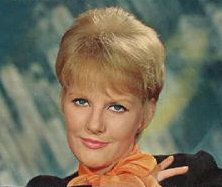 But in December, 1964, things took a turn for the better. Warner Brothers signed British songstress
Petula Clark as their own corner on the British Invasion. Her first hit was "Downtown" [WB 5494], which
went straight to #1 in early 1965. For the next several years, "Pet" Clark would be the label's most
consistent hitmaker, rarely out of the top 20 and most of the time in the top 10. Clark didn't cool off
chartwise until 1968. Aside from Petula Clark, 1965 brought more of the same doldrums that had beset
1964. The Marketts/Routers, Everly Brothers, Peter Paul & Mary, Connie Stevens, and the others in the
Warner stable were having great difficulty scoring hits in the face of the new musical trends. Pop
crooners were on the way out, and high energy rock and roll was in. So who was the newest artist
signing for Warner Brothers in 1965? Las Vegas veteran Vic Damone, who scraped into the top-30 with
"You Were Only Fooling" [WB 5616, #30], after which he was never heard from again.
But in December, 1964, things took a turn for the better. Warner Brothers signed British songstress
Petula Clark as their own corner on the British Invasion. Her first hit was "Downtown" [WB 5494], which
went straight to #1 in early 1965. For the next several years, "Pet" Clark would be the label's most
consistent hitmaker, rarely out of the top 20 and most of the time in the top 10. Clark didn't cool off
chartwise until 1968. Aside from Petula Clark, 1965 brought more of the same doldrums that had beset
1964. The Marketts/Routers, Everly Brothers, Peter Paul & Mary, Connie Stevens, and the others in the
Warner stable were having great difficulty scoring hits in the face of the new musical trends. Pop
crooners were on the way out, and high energy rock and roll was in. So who was the newest artist
signing for Warner Brothers in 1965? Las Vegas veteran Vic Damone, who scraped into the top-30 with
"You Were Only Fooling" [WB 5616, #30], after which he was never heard from again.
1966 brought four big hits from Petula Clark, a #17 hit for the Marketts with "Batman Theme" [WB 5696], and two oddball "one hit wonder" hits: "Day for Decision" by country singer Johnny Sea [WB 5820, #35], and Jerry Samuels' infamous "They're Coming to Take Me Away, Ha-Haa!" [WB 5831, #3]. The latter disc, recorded under the pseudonym "Napoleon XIV," was possibly the most obnoxious record ever to hit the top 5, and considering the other candidates, that's saying something. It stormed up the charts to #3 and then plummeted just as fast, lasting a mere 6 weeks total on the top 100. The flip side of the record was the same track backwards, and featured a backwards Warner Brothers label. As obnoxious as the record was frontwards, the backwards version playing over and over on a jukebox was surreally perverse. The other Warner Brothers artists were still having trouble making hits in 1966. Soul singer Lorraine Ellison was added to the roster and had a mid-charter with "Stay With Me" [WB 5850, #64], and the Beau Brummels were signed well after their prime hit making days ("One Too Many Mornings", WB 5813, #95) but otherwise it was a year much like the past two.
Some changes had to be made, and in 1967, they were. Warner Brothers Records was sold to Seven Arts, Ltd. for $85 million. The new label, called Warner-Seven Arts, then purchased Atlantic Records. In the late '60s, Warner-Seven Arts, under the direction of Mo Austin and Joe Smith, became a much stronger label with Van Morrison, Harper's Bizarre, James Darren, the Tokens, Charles Wright and the Watts 103rd Street Rhythm Band, J.J. Jackson, the Neon Philharmonic, Mason Williams, and the Association all producing hits, in addition to roster holdovers Petula Clark, the Everly Brothers, and Peter, Paul & Mary.
At Reprise, things were even more optimistic. The hits were coming from Kenny Rogers and the First Edition, Joni Mitchell, Randy Newman, Neil Young and Arlo Guthrie. Reprise also made distribution deals with UK labels and got Jimi Hendrix Experience from Track, the Kinks from Pye, Jethro Tull from Chryalis and Fleetwood Mac from UK Warner-Reprise.
Corporately, as the 1960s came to a close, more changes took place. In 1969, the Kinney National Company purchased Warner Brothers/Reprise/Atlantic from Seven Arts. Kinney had started as a funeral parlor chain, but had moved into the entertainment field in 1967 by purchasing D.C. Comics, All- American Comics, and the Ashley Famous Talent Agency. In 1970, after purchasing Warner and Atlantic, Kinney also bought Elektra Records from Jac Holzman, putting Warner/Reprise, Elektra, and Atlantic all under the Kinney empire. In 1972, Kinney renamed itself Warner Communications, Inc., which included the giant WEA Distribution corporation (for "Warner/Elektra/Atlantic"). Warner Brothers Records had become part of a gigantic conglomerate, one of the biggest forces in the music industry.
The early 1970s saw the Warner Brothers label grow to the major label it had always aspired to become. New artists included rockers Black Sabbath, Deep Purple, Grateful Dead, Ides of March, Alice Cooper, and the Faces. On the more acoustic side, there was James Taylor, Seals and Crofts, Dion, and America. Also added were soul bands Tower of Power and Malo as well as pop/soul singer Dionne Warwick. By 1973, Warner Brothers was firmly ensconced in a leadership position in the music industry, and that is where they remain today.
Epilogue: In 1989, Warner Communications merged with Time, Inc., to form Time-Warner, Inc., putting the Time- Life Music catalog under the same roof as WEA, and in the late 1990s, Rhino Records was added to this group. After a merger with AOL to form AOL-Time Warner in January, 2001, and the subsequent plunge in high tech stocks in the early 2000s, the company was saddled with much debt, and began selling off portions of the conglomerate. By late 2003, AOL-Time Warner reverted to Time Warner, Inc. once again when Steve Case, founder of AOL, resigned as AOL-Time Warner Chairman.. On December 31, 2003, Time-Life, Inc., the former book company who abandoned books in favor of CDs and DVDs in 2002, was sold off to a group of private investors headed by Strauss Zetnick, a former record company executive.
This discography covers the Warner Brothers and Reprise Labels. Also covered are labels distributed by Warner Brothers/Reprise including: Ampex, Bearsville, Bizarre, Brother, Diety, Discreet, Dove, Lizard, Loma, Palladium, Paradise, Purple, Qwest, Raccoon, RFC, Ruby, Slash, Straight, Valiant, Viva, Warner- Curb, Warner-Spector, and Whitfield. The Atlantic and Elektra labels and their subsidiaries are listed elsewhere. Discographies for Warner Special Products and Time-Life Music asre also included. A discography for Rhino Records will be added at a later date.
This discography was constructed using our personal record collections, Schwann catalogs, Phonolog catalog and other discographical resources.
Track listings containing a double slash mark (//) are the actual song listings on the album with the double slash mark dividing side one from side two. Track listings that have a (*) in front of the number are shown in alphabetical order because actual track listings are unknown. Track listings without the // or the * are shown as printed in the Schwann catalog or Phonolog catalog. Usually these listings are consistent with the actual record lineup although side one/side two breakdown is not known.
We would appreciate any additions or corrections to this discography. Just send them to us via e-mail. Both Sides Now Publications is an information web page. We are not a catalog, nor can we provide the records listed in these discographies. We have no association with Warner Brothers Records or any of its associated labels. Should you be interested in acquiring albums listed in this discography (all of which are out of print), we suggest you see our Frequently Asked Questions page and follow the instructions found there. This story and discography are copyright 2004 by Mike Callahan.
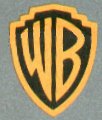 Warner Brothers Records Story
Warner Brothers Records Story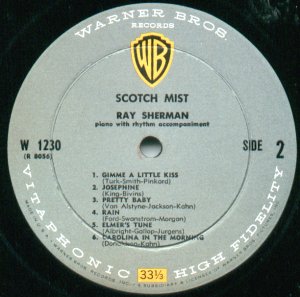 Warner Brothers Album Discography, Part 1 Warner
Brothers 1201-1399 (1958-1960)
Warner Brothers Album Discography, Part 1 Warner
Brothers 1201-1399 (1958-1960)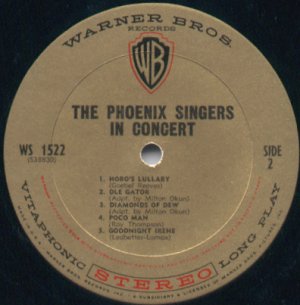 Warner Brothers Album Discography, Part 2 Warner
Brothers 1400-1599 (1960-1965)
Warner Brothers Album Discography, Part 2 Warner
Brothers 1400-1599 (1960-1965)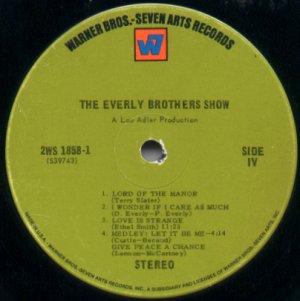 Warner Brothers Album Discography, Part 3 Warner
Brothers 1600-1799 (1965-1969)
Warner Brothers Album Discography, Part 3 Warner
Brothers 1600-1799 (1965-1969) Warner Brothers Album Discography, Part 4 Warner
Brothers 1800-1966 (1969-1972)
Warner Brothers Album Discography, Part 4 Warner
Brothers 1800-1966 (1969-1972)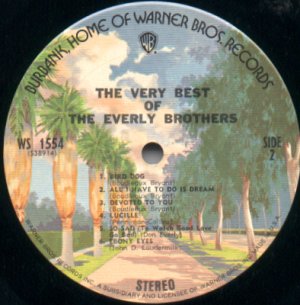 Warner Brothers Album Discography, Part 7 Warner
Brothers 2900-3099 (1975-1977)
Warner Brothers Album Discography, Part 7 Warner
Brothers 2900-3099 (1975-1977)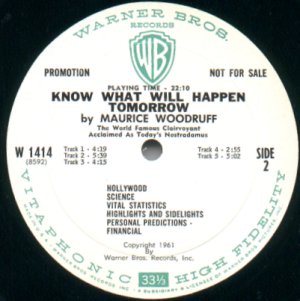 Warner Brothers Album Discography, Part 12 Warner
Brothers Promotional Issues (incl. Loss Leader Series) & Misc.
Warner Brothers Album Discography, Part 12 Warner
Brothers Promotional Issues (incl. Loss Leader Series) & Misc.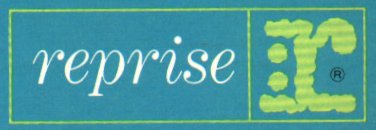 Reprise Records Story
Reprise Records Story
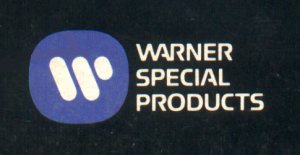 Warner Special Products Story
Warner Special Products Story
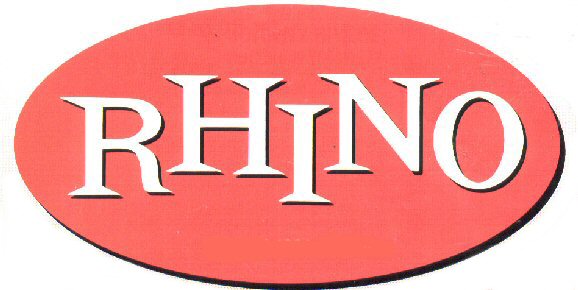 Rhino Records Story
Rhino Records Story
 Time-Life Music Story
Time-Life Music Story
 Bearsville Album Discography
Bearsville Album Discography
 Bizarre Album Discography
Bizarre Album Discography
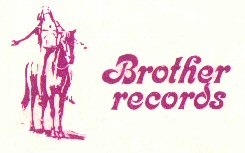 Brother Album Discography
Brother Album Discography
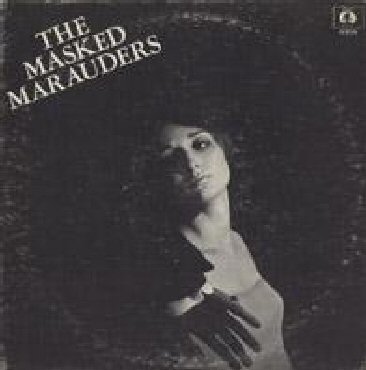 Deity Album Discography
Deity Album Discography
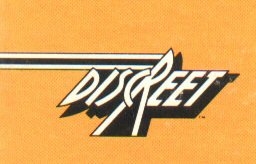 Discreet Album Discography
Discreet Album Discography
 Dove Album Discography
Dove Album Discography
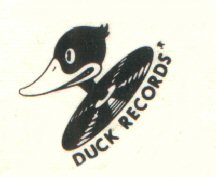 Duck Album Discography
Duck Album Discography
 Loma Album Discography
Loma Album Discography
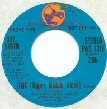 Palladium Album Discography
Palladium Album Discography
 Paradise Album Discography
Paradise Album Discography
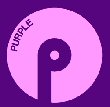 Purple Album Discography
Purple Album Discography
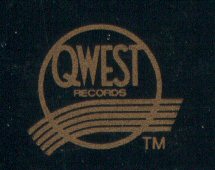 Qwest Album Discography
Qwest Album Discography
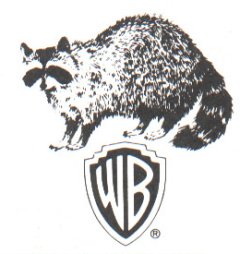 Raccoon Album Discography
Raccoon Album Discography
 RFC Album Discography
RFC Album Discography
 Ruby Album Discography
Ruby Album Discography
 Sire Album Discography
Sire Album Discography
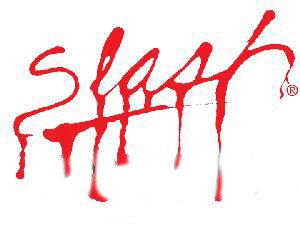 Slash Album Discography
Slash Album Discography
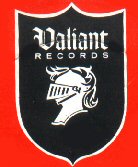 Valiant Album Discography
Valiant Album Discography
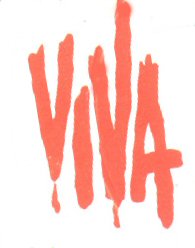 Viva Album Discography
Viva Album Discography
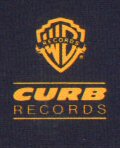 Warner/Curb Album Discography
Warner/Curb Album Discography
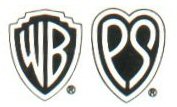 Warner/Spector Album Discography
Warner/Spector Album Discography
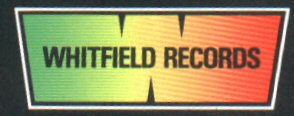 Whitfield Album Discography
Whitfield Album Discography
 Back to the Discography Listings Page
Back to the Discography Listings Page